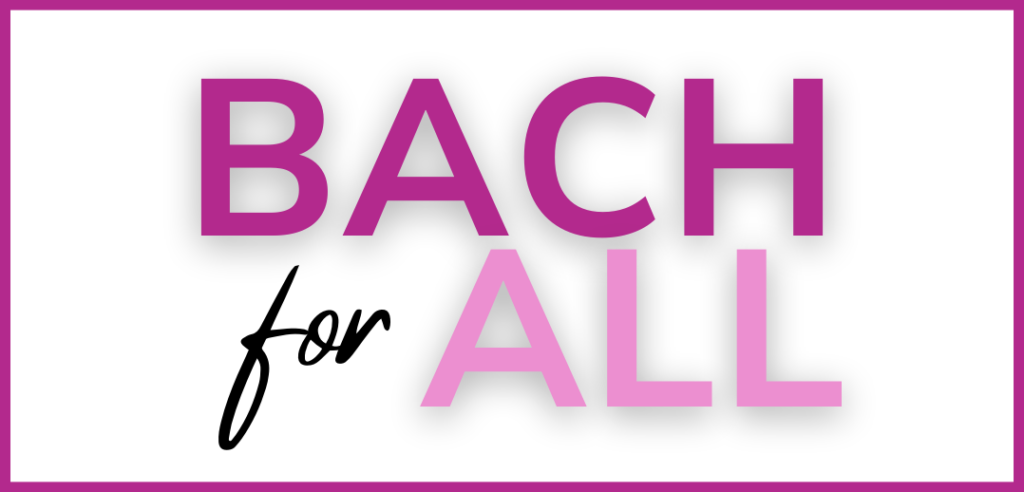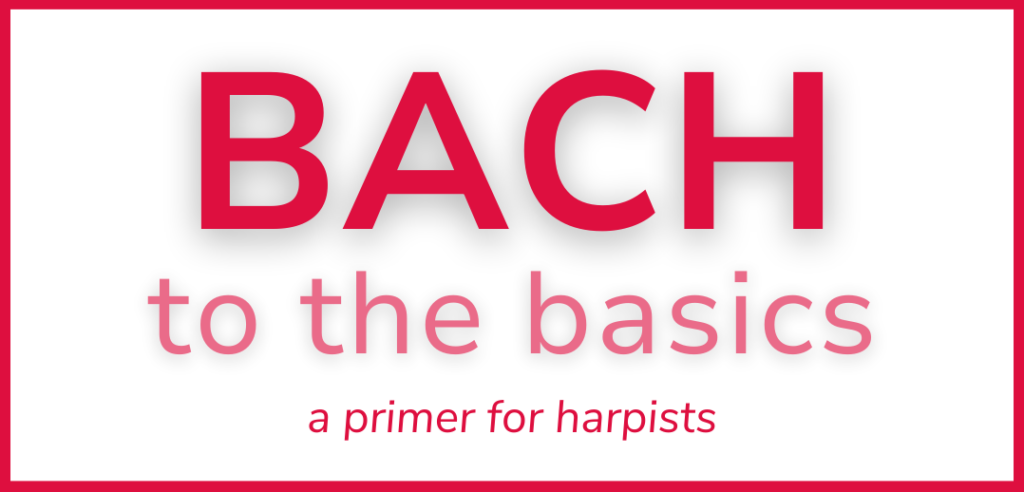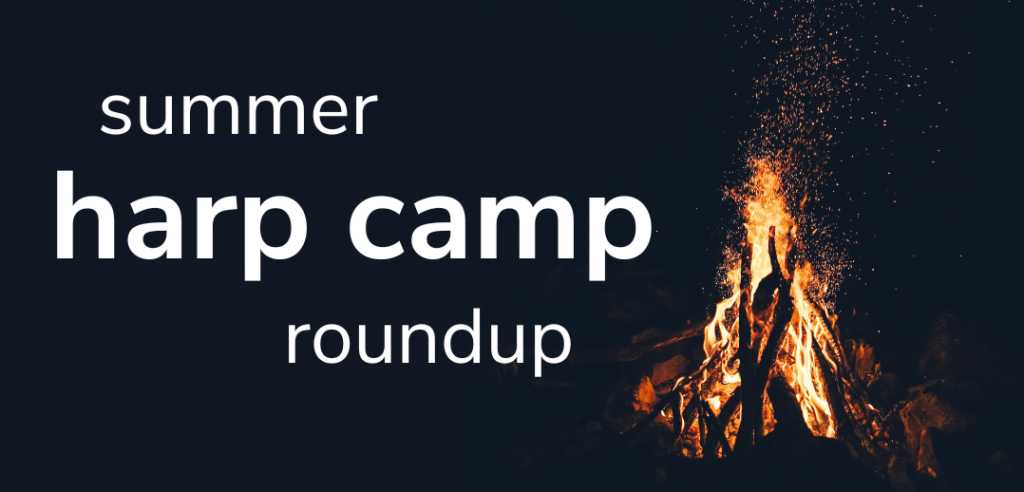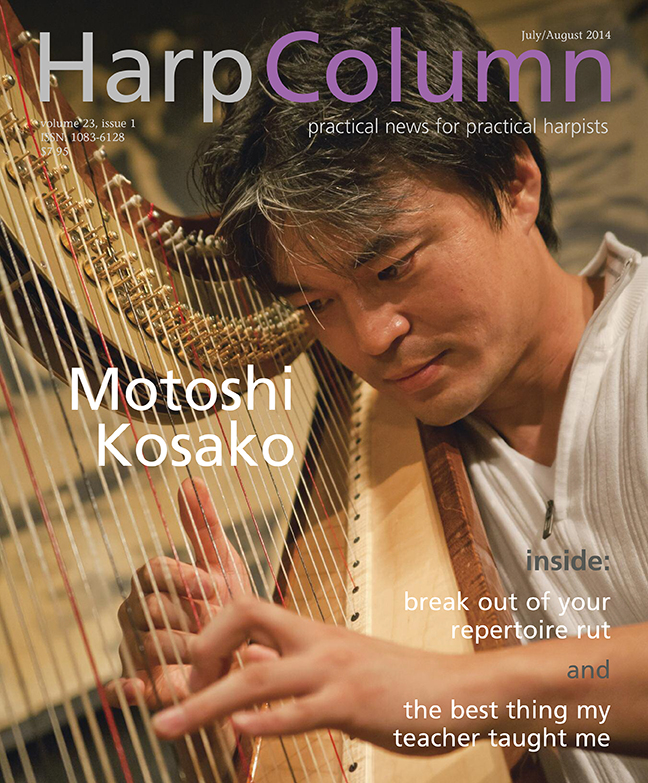Put a fresh twist on the old standbys.
Have you ever had that déjà vu experience of teaching a student the same piece that you taught the hour or day before, except, unlike déjà vu, it’s really happening, and it becomes difficult to remember which concepts you’ve covered with which student? Sitting in my harp studio at the University of North Texas, I am surrounded by six harp practice rooms, so I sometimes feel as if I am practicing alongside my students throughout the semester, even when I am doing office work. The spring semester happened to be a “Hindemith semester,” with three students (a third of the studio) preparing this sonata at the same time for various recitals and competitions.
On one hand, this can be truly beneficial for students. They hear each other preparing and are able to give valuable feedback to one another, as someone walking (or practicing) in the same shoes. On the other hand, you run the risk of “Hindemith burnout” when you and your students are continually hearing performances of the same piece every day of every week.
Like the Hindemith Sonata, there are dozens of pieces in our classical repertoire that are considered standard. Yep, you know which ones they are, the pieces that always seem to surface on harp recitals, YouTube clips, and newly-released CDs. Make no mistake: these pieces have stood the test of time and become standards for many valid reasons. They are pleasing to hear and are often technically beneficial for the performer and idiomatic for the harp.
[pullquote]Expert Input
A number of professional teachers contributed their ideas for this article, including: Barbara Biggers, Kimberly DeRosa, Maia Jourde, Laura Logan, Emily Mitchell, Naoko Nakamura, and Yumiko Endo Schlaffer.[/pullquote]
For many years, I’ve pondered the mystery of pieces that are en vogue for a time and then disappear from our repertoire, only to be “rediscovered” many years later. The Handel Concerto in B-Flat is a prime example—it has enjoyed even more popularity among harpists today than it did during Handel’s lifetime. But for every Handel Concerto that enjoys the good fortune of a second life, there are many more fine compositions doomed to retreat into the shadows of dusty music shelves and drawers instead of sitting on our music stands. Why is this? The answer is simple: we are programmed to favor things that are familiar to us. In musical terms, this means that students will often request to play pieces that their friends have played or that they have heard on the newest CD, and teachers tend to recommend the pieces that their teachers favored. So we are all essentially hard-wired to return to the same pieces over, and over, and over, and over, and over…
If you find yourself in this cycle and want to break it, there is good news. Discovering new repertoire (whether it is truly new—as in just published—or simply new to you) is much easier than it was even 10 or 15 years ago. With the explosion of accessible information on the Internet, you can just type “Spanish harp music” into a Google search, and voilà, 20 or 30 choices pop up with everything from Albénz to Zabaleta! Problem solved, right? Well, not exactly. You still have to figure out which of those meets your needs.
[protection_text]
This guide is intended to assist you in answering this very question, but before we delve into alternative repertoire options, please consider that this is not meant to be an exhaustive list of standard harp repertoire, nor is it intended to be used as a strict guide. Every harpist has unique needs and talents, and just like two harpists are not the same, no two pieces have exactly the same skill requirements. Plus, innovative harp compositions are published every week, and this guide is a snapshot in time, so stay on top of new pieces online at harpcolumn.com or through your favorite harp retail outlet.
The descriptions below contain harp pieces (mostly solo) that are regularly required for competitions and frequently posted on websites like YouTube. Alternative suggestions, which have similar traits and are of a similar difficulty level, are listed below each standard piece. The list essentially progresses in difficultly, beginning with intermediate level repertoire. We did not include beginner-level pieces in this guide because the novice repertoire is so broad that the concept of standards isn’t as well-formed as with more advanced music.
The intention is not to replace any of the standard pieces, but to offer suggestions that might help you find the perfect fit in terms of a student’s interests and proficiency, especially if you are sensing burnout on a particular composition. In constructing this list, every effort has been made to include a concise menu of works that represent a variety of playing styles and levels. Pieces that can be played on lever harp are indicated. I have no doubt you will think of more pieces that should be included (as I write, my list continues to grow too!), so I encourage you to make notes on this article about additional alternative pieces as you think of them. Just maybe, you’ll discover some new favorite “standards” to add to your teaching and playing repertoire!
The Standard
• “Little Fountain,” Pratt (lever)
The Alternatives
• “Rippling Water” from Pacific Sketches, Gustavson (lever)
• “Waltz of the Flowers” cadenza, Tchaikovsky, arr. Fell (lever)
After the glissando, the arpeggio is probably the most beloved technique of new harpists, and many students are excited to start their first full piece of arpeggios. It’s hard to top Pratt’s “Little Fountain” in the arpeggio arena, but Eleanor Fell’s lever harp adaptation of Tchaikovsky’s “Waltz of the Flowers” cadenza is a nice option, although it is more challenging than “Little Fountain” and contains some full chords, which could be adapted for smaller hands. Another beautiful option in this category is Nancy Gustavson’s “Rippling Water” from her collection Pacific Sketches. The arpeggios in this solo are ascending and descending, with occasional crossovers by the left hand, and the melody carried by the right-hand thumb.
The Standard
• Harmonious Blacksmith, Handel (various editions)
The Alternatives
• Tema con Variazioni, Handel, arr. Zingel
• Variations on a Theme by Mozart, LeDentu (lever)
• Somewhat Harmonious, Schocker
The theme and variation genre is not only exciting for audiences, but is a wonderful teaching tool because one piece covers many techniques. I must confess that I wrestled with this particular category for many hours before arriving at alternatives because this genre is really two genres in one. Some seemingly old variations are actually modern compositions based on Baroque/Classical themes, such as LeDentu’s Variations and Schocker’s Somewhat Harmonious. Other variations were fully-written in the Baroque/Classical periods and were later arranged for harp, such as Handel’s Harmonious Blacksmith and Tema con Variazioni. Of course, each of these variations presents a variety of technical challenges. On this list, Zingel’s arrangement of Handel’s Variations is, quite simply, one of the most beautiful and well-written sets of variations that I have found, interweaving major with minor throughout the theme and covering all of the standard variation techniques.
If you are looking for variations of a slightly less advanced variety, check out Purcell’s Ground in F (lever),Andrès’ La Gimblette (lever),Thomas’s Minstrel’s Adieu to His Native Land, Handel’s Passacaille, and the Haydn/Salzedo Theme and Variations. Of course, the Handel Passacaille and the Haydn Theme and Variations are probably the most standard.
The Standard
Chanson dans la nuit, Salzedo
The Alternatives
• Épices,Andrès(lever)
• Liquid Shadows, Kondonassis (lever)
• Haiku for the Harp, McDonald/Wood (some lever)
Salzedo’s Chanson dans la Nuit is a masterpiece, particularly through its use of modern techniques with memorable tunes, written at a solid intermediate level. Like Chanson, the Haiku book uses many non-traditional techniques, each illustrating a different haiku. Kondonassis’ Liquid Shadows is a gorgeous work that opens with xylophonic sounds and has large passages of ethereal scales. The Andrès Épices collections includes some of the most challenging pieces in this list. Each piece is based on a different spice (yes, you read that correctly!). Imagine programming a “menu” recital with “Muskade” (nutmeg), and“Vanille” (vanilla)—yum!
The Standard
• Concerto in B-Flat, Handel (several arrangements, some lever)
The Alternatives
• Sonatas, no. 3, 6, and 7, Arne, arr. Watkins • Sonata no. 1, Parry arr. Watkins, and nos. 1, 2, 3 and 4, arr. Williams
[/pullquote]
Handel’s Concerto in B-Flat is probably one of the most-played pieces in today’s harp repertoire, but it wasn’t always this popular among harpists. Although it was originally performed on the triple-strung harp and written as part of Handel’s Alexander’s Feast, the piece was somehow forgotten by harpists when it was published with a set of organ concerti. Since we tend to treat Handel’s Concerto as a solo sonata by playing it without accompaniment, I’ve considered other Baroque sonatas as alternatives. John Parry was a blind harpist who was admired by many composers, and some sources say he was one of the first to perform Handel’s Concerto. Although the Thomas Arne sonatas were written for keyboard, the common practice during the late Baroque time was to borrow the keyboard repertoire for harp (see the interesting quote from Beethoven in Anthology of English Music for the Harp, volume 3).
The Standard
• Sonata in C Minor, Pescetti
The Alternatives
• Sonatas nos. 1–6, Rosetti, arr. McDonald/Wood
Like Parry and Arne, Pescetti was a contemporary of Handel, and the transcription of his Sonata in C Minor is a favorite among harpists (once they have sorted out the infamous pedal passage). Like the Arne sonatas, Rosetti’s keyboard sonatas were almost certainly played on harp at that time.
The Standard
• Sonata in C Minor, Dussek , arr. Zabaleta
The Alternatives
• Sonatas, no. 1–6, J.L. Dussek (various arrangements) •Sept Sonatas Progressives, op. 92, Naderman •Variations on the Air “L’Oiseau Chantant,” Naderman
With the Dusseks and Nadermans, the harp officially entered the Classical era and grew its first set of pedals. Dussek’s Sonata in C Minor has been a long-time favorite from this era, with its stealth switches between major and minor and catchy themes in each of the three movements. The Naderman sonatas are often played as etudes, but can now be performed in duo with the flute line written by Paul Hurst. We often forget that Naderman wrote many other works, including Variations on the Air L’Oiseau Chantant, which is a lovely and engaging work that shows off the pedal capabilities of the Naderman single-action harp.
The Standard
• Nocturne, Glinka
The Alternatives
• Chanson de Mai, op. 40, Hasselmans
• Marguerite au Rouet, op. 19, Zabel
It’s no surprise that the Nocturne by Glinka is a favorite, with its sweetly sad melody, supported by left-hand arpeggios and lyrical cadenzas. A lightly more challenging work, Hasselmans’ Chanson de Mai features lyrical arpeggios and has the added bonus of an extended left hand trill. Like the Nocturne and Chanson, Zabel’s Marguerite au Rouet relies on continual arpeggiations to mimic the perpetual movement of a spinning wheel while the left hand jumps up to play the top melody.
The Standard
• Absidioles, Andrès
The Alternatives
• “Les Anesses Grises sur la Route d’El-Azib” from Images Suite 3, Tournier
• “Fire Dance” from Petite Suite, Watkins
[pullquote]Did you know? The word “absidioles” refers to the architecture of churches, with dome-shaped corridors called “apses.”[/pullquote]
Bernard Andrès truly created a treasure in Absidioles by writing a piece that is both modern and exciting, but also accessible to a variety of audiences. This work has certainly encouraged many harpists to explore 20th century repertoire. The repeated rhythms and use of the harp’s full range are similar to David Watkins’s “Fire Dance.”Although not as modern in sound, the “Les Anesses Grises sur la Route d’El-Azib” (Grey Donkeys on a Road to El-Azib) by Tournier takes harpists on a colorfully rhythmic and exotic journey.
The Standard
• Impromptu Caprice, Pierné
The Alternatives
• Siciliana, Respighi, arr. Grandjany
• Mazurka, op. 12, Schuëcker
• Au Matin, Tournier
Many of our favorite pieces in the harp literature show off two or three very different harp techniques. Pierné’s Impromptu Caprice has it all—arpeggios, rhythmic sections, glisses, wide dynamic changes, and a huge ending! Another piece which beautifully highlights arpeggiations and cross-fingering is Tournier’s Au Matin. If you haven’t become familiar with the Schuëcker Mazurka, I’m sure you find this piece to be a lovely companion for the Pierné, as it requires much of the same control and uses the full range of the harp. The Respighi Siciliana, while ending on a much quieter note, requires mastery of several different techniques played consecutively, including muffles, harmonics, and a large section of virtuosic scales. Surprisingly, the virtuosic section happens in the middle of the work instead of the end!
The Standard
• Prelude in C Major “Harp”, op. 12, no. 7, Prokofiev
The Alternatives
• Follets, op. 48, Hasselmans
• “Danse” from Mother Goose Suite, Ravel, arr. Dulova
• “Whirlwind”from Five Preludes, Salzedo
Prokofiev’s Prelude in C has enjoyed a double life as a harp work and also as a piano work. In fact, Prokofiev is said to have loved this work so much that he chose to perform it regularly in his own recitals. When performed by pianists, the word “harp” is generally included with the title. This says a lot for the piece’s charismatic qualities, which uses a gossimer right-hand pattern and a left-hand melody that alternates between lyrical and angular styles. Similarly, Hasselmans’ Follets (Will-o’-the-Wisp) uses a light technique, but between both hands in the upper register of the harp; the effect is simply breathtaking when performed at tempo! Another beautiful option is Salzedo’s “Whirlwind,” which uses a repeated right-hand pattern amidst glisses and various left-hand melodies. Similarly, the Ravel “Dance” has repeated patterns in the top register of the harp, but the melody is instead imbedded within the quick right-hand patterns.
The Standard
• La Source, Hasselmans
The Alternatives
• Vers la Source dans la bois, Tournier
• La Source (Am Springbrunnen), op. 23, Zabel
The harp almost seems to have been invented to play fountain music. All three of these works have enjoyed similar popularity in recent years, but of these pieces, Zabel’s is the most technically demanding and showy through the fullness of its waltz-like themes. Hasselmans’ La Source features descending arpeggios and a melody played with the right-hand thumb for a virtuosic effect. In the writing style that Tournier mastered, enharmonic notes seem to sparkle from patterns that are shared by both hands. You can check out Mary Kay Waddington’s new edition of Tournier’s Vers la Source with printed enharmonic re-spellings.
The Standard
• Féerie: Prélude et Danse, Tournier
The Alternatives
•The Lark, Glinka- Balakirev, arr. Erdeli •Deux Impromptus, Cras
The playfulness of Tournier’s writing keeps drawing harpists to Féerie, which seems to use every string on the harp in playful gestures that scamper up and down. Although more somber in tone, Glinka’s tune The Lark has been arranged for many different instruments but seems to find the balance of joyful melancholy on the harp. Rarely heard, the Cras Deux Impromptus emulate the crashing of waves through pentatonic-inflected arpeggios in the first impromptu, and joyful, dance-like ruminations in the second impromptu. This is a highly satisfying piece to play once the fingerings are in place.
The Standards
• Danses Sacrée et Profane, Debussy
•Introduction and Allegro, Ravel
The Alternatives
•Quintet for flute, harp, string trio, Françaix
• Concert à cinq for flute, harp, violin, alto and cello,op. 71, Jongen
• Concertstück, Pierné
• Sérénade for flute, string trio, and harp, op. 30, Roussel
If someone asked you to name three standard harp pieces for ensemble, I would be willing to bet that either the Ravel Introduction and Allegro or the Debussy Danses would be one of your choices. Although Debussy and Ravel did not see themselves as similar, and although these works were written for very different harps (Debussy was commissioned to write for the cross-strung chromatic harp, and Ravel was commissioned for the double-action harp), harpists tend to lump these two works together. Both pieces can be performed as chamber or as miniature concerti, both have a certain airiness that entered writing during the early 1900s, and both are of similar difficulty. Although slightly more difficult, the Françaix, Jongen, and Roussel chamber works are every bit as beautiful as our accepted standards. Likewise, the Pierné Concertstück is even more full and virtuosic, but uses similar nuances. It’s also worth noting that there are several harp solos—like Tournier’s Féerie, Samuel-Rousseau’s Variations Pastorales, and Grandjany’s Rhapsodie—which have a string accompaniment option and memorable melodies. If you are considering a more modern sound with string quartet, Caplet’s Conte Fantastique is simply amazing, but is notably more difficult than either the Ravel or Debussy.
The Standard
• Spanish Dance no. 1, DeFalla, arr. Grandjany
The Alternative
• Malagueña, Lecuona, arr. Grandjany
• Concert Fantasy on Lara’s Granada, Salzedo
• Asturias, Albéniz, arr. McDonald/Wood, from Spanish Music for the Harp, vol. 2
•Malagueña, Albéniz, arr. Zabaleta
• Spanish Dance no. 5, Granados (various arrangements) •Gitana, Hasselmans
Once you start to consider the possibilities of Spanish music on the harp, a whole new world of repertoire is open. Considering that the harp can make many of the same sounds as a guitar and has the range of a piano, it’s no surprise that there are a great many works from which to choose. The rarely-performed Albéniz Malagueña is delicate and virtuosic through its note repetitions rather than sheer volume. Likewise, the Albéniz Asturias starts in a subtle fashion, but quickly builds in virtuosity. Salzedo’s arrangement of Granados’ Spanish Dance no. 5 is frequently played by harp ensembles, and is also available as a solo arrangement by Zabaleta. And, if you haven’t had the good fortune to play Hasselmans’ Gitana, you are in for a true treat in this original work with Spanish harmonies and rhythms.
Searching for simpler Spanish works? Consider Hasselmans’ Guitare or Albéniz’s Sonate en Re, Chavarri’s El Viejo Castillo Moro, and the popular Viejo Zortzico by Guridi, all of which are shorter and less-demanding than the other pieces in this category.
The Standard
• Sonata, Hindemith
The Alternatives
• Sonata, Glanville-Hicks
• Sonata, Houdy
• Sonata, Tailleferre
Some of the most treasured 20th-century harp music has come to us in the form of sonatas, thanks to the work of many harpists who commissioned them. There are many sonatas to choose from, but the Hindemith Sonata has emerged as a right-of-passage. We seem to be drawn to the sad, unsung text in the 3rd movement and the lyricism that is present even in rhythmic sections. The Houdy and Tailleferre sonatas are just as accessible to audiences through their tonality. Glanville-Hicks has recently gained popularity, especially since it started appearing as a repertoire option for competitions. The Krenek and Flagello sonatas did not make our short list, but are also wonderful options for more atonal and technically-demanding sonatas than the Glanville-Hicks, Houdy, and Tailleferre.
The Standard
• Fantaisie, op. 35, Spohr arr. Zingel
The Alternatives
•Variationen sur l’air “Je suis encore dans mon printemps” (I am still in my spring), op. 36, Spohr, arr. Posse
•Rondeau on the Trio ‘Zitti Zitti,’ Bochsa, arr. Moretti
The Spohr Fantaisie always amazes me, because it seems like a true romantic masterwork that could be orchestrated, yet we get to claim it for the harp! The Fantaisie is certainly performed more often than Spohr’s Variationen, perhaps because the Variationen are more classical in style, but they are every bit as demanding. The Bochsa/Moretti Rondeau is a resurrected showpiece in our repertoire, based on themes from the beloved opera Barber of Seville by Rossini.
The Standard
•Impromptu, Fauré
The Alternatives
• Impromptu, op. 28, no. 3, Reinhold arr. Hainen
• Une châtelaine en sa tour…, Fauré
Perhaps some of the greatest mysteries in our repertoire surrounds the true source of Fauré’s Impromptu. Regardless of whether it was written solely by Fauré or if Hasselmans completed the work, it is a piece that requires quick shifts and nuanced control in every phrase, similar to the skills required by the Reinhold Impromptu. Fauré’s Une châtelaine is much more subtle, but every bit as challenging as his Impromptu, and the lyrical sections of the two pieces bear many similarities. It’s worth noting that the Glière Impromptu is another work that opens with large, full chords, and contains virtuosic arpeggios with an imbedded melody. It does not carry as many technical demands as Fauré’s Impromptu, so this is a great option to prepare a student for larger impromptus.
You may have noticed that I haven’t included some of the “blockbuster” pieces in our repertoire, such as Tournier’s Sonatine, Grandjany’s Rhapsodie, Renié’s Légende, and Salzedo’s Variations on a Theme in Ancient Style. Quite simply, there are some masterworks that hold a particularly special place in our repertoire. My hope is that this little list will help you get out of your repertoire rut and explore the pieces that are just beyond your comfort zone. Your ears (and your students) will thank you. •
Jaymee Haefner teaches harp and theory, and is the Director of Undergraduate Studies the University of North Texas College of Music in Denton. She currently serves as the Recording Secretary and Southwestern Regional Director for the American Harp Society, Treasurer for the World Harp Congress, and National Harp Associations Liaison for the World Harp Congress Review.















